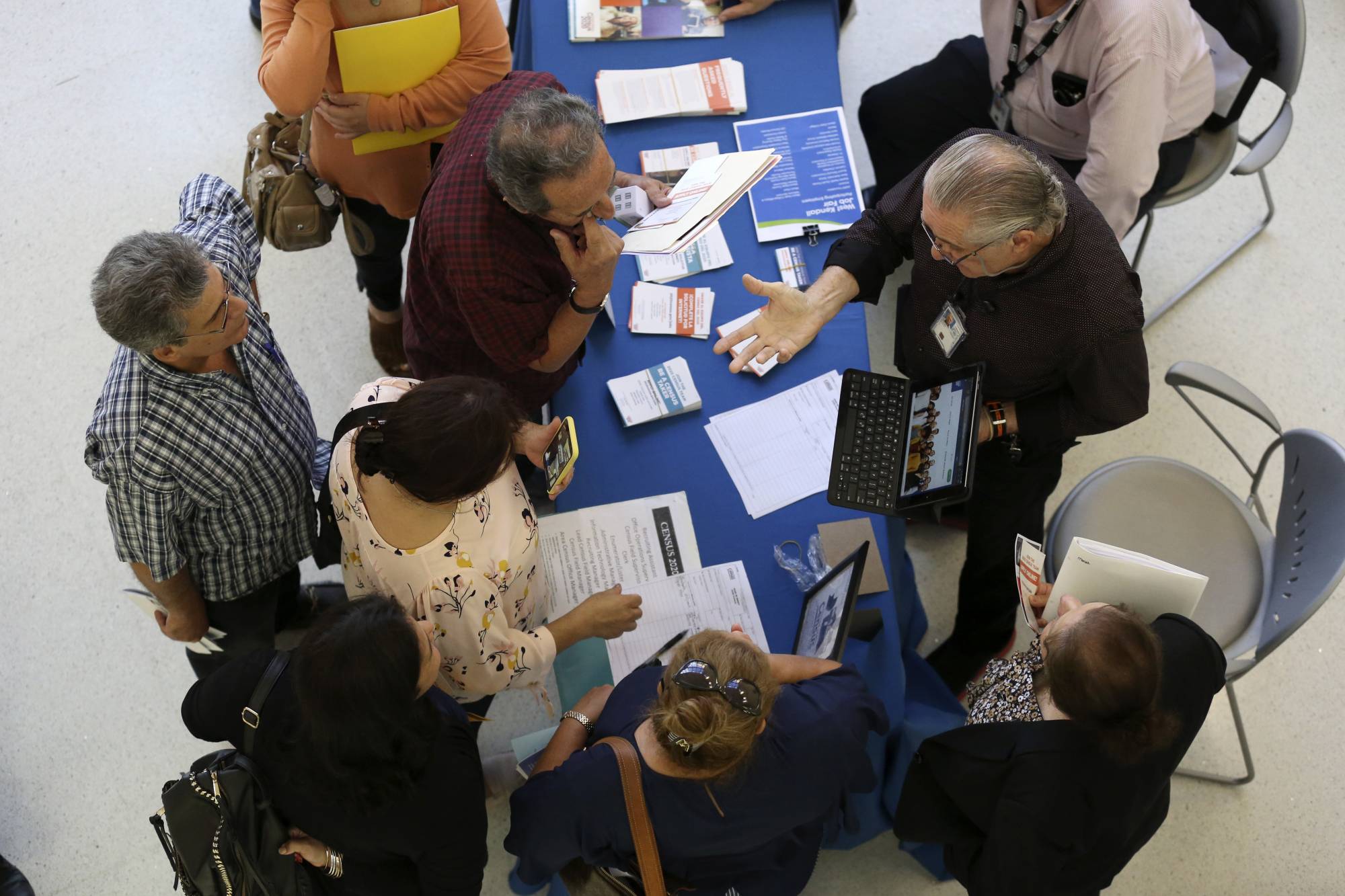Hubbard Radio Washington DC, LLC. All rights reserved. This website is not intended for users located within the European Economic Area.
Leading the charge for small business innovation at the GSA
In conducting procurements on behalf of other agencies, the General Services Administration's Assisted Acquisition Service often turns to small business, specif...
Best listening experience is on Chrome, Firefox or Safari. Subscribe to Federal Drive’s daily audio interviews on Apple Podcasts or PodcastOne.
In conducting procurements on behalf of other agencies, the General Services Administration’s Assisted Acquisition Service often turns to small business, specifically the Small Business Innovation Research Program, to get new technology into the government. For his work in this area, Rodney Couick, director of Assisted Acquisition Services for GSA’s Great Lakes region, won a prize known as a Tibbetts Award from the Small Business Administration.
Interview transcript:
Tom Temin: Mr. Couick, good to have you on.
Rodney Couick: Good morning, Tom. Thank you very much. It’s my pleasure.
Tom Temin: So tell us about Assisted Acquisition Service and how it relates to the Small Business Innovation Research, the SBIR program from SBA, how do the two connect?
Rodney Couick: Well, as you mentioned, I am honored to have the opportunity to serve as the director of assisted acquisition services, or AAS, for the Great Lakes region, which we’ll refer to as R5. Our mission is to award and administer contracts and task orders on behalf of external customers on a fee-for-service basis. With SBIR, or Small Business Innovation Research. As you mentioned, it is a competitive award program. It’s coordinated with the US Small Business Administration. Our goal in AAS is to bring innovative solutions to the federal marketplace, support the growth of American small businesses, facilitate job creation and positive economic impact and strengthen our industrial base. Most of the contracts that we do are for professional services such as information technology, engineering services, technology development, research and development, prototype development, things of that nature. That is non-SBIR, and SBIR alike. But prior to me joining GSA in 2011, I was a career Air Force acquisition officer. I was responsible for SBIR work throughout my entire career in one capacity or another. Our biggest pain point was always getting our contracts awarded in a timely manner. And that was due in large part to a lack of dedicated contracting personnel. So when I joined GSA, and I learned what AAS is all about, it was obvious to me that a fee-for-service contracting activity is the perfect solution to this dilemma. Customers can come to us, customers that have SBIR work and SBIR funding or non-SBIR funding alike, but they lack the contracting personnel to award and manage their contracts, they can come to us and get those services. And that’s what we’re doing. We’re meeting a need that has largely been lacking due to a lack of dedicated contracting resources.
Tom Temin: Because when you think of innovative research and technology transfer from small business, you tend to think in terms of products, perhaps more than in services. So maybe give us an example or two of where SBIR vendors came in through AAS in your region, what kinds of projects they were associated with.
Rodney Couick: Oh, absolutely. Phase Three is actually for any work that derives from, extends or completes prior SBIR or STTR funded efforts. You mentioned Small Business Technology Transfer, we’ll call that STTR. And that work has to be funded by non-SBIR or STTR sources of funds. So those are the two key criteria that must be met for a phase three. And phase three can be used for services, it can be used for production, it can be used to buy products, it can be used to conduct further research and development. It is actually a very broad scope. So some examples: You’ve asked for services in particular, one of the contracts that we’re very proud of, and is a huge success story for us, is a large multi-million dollar contract that we awarded to an economically disadvantaged women-owned small business to provide what we will refer to as a digital engineering echo system for primarily the U.S. Air Force. But now it’s being used for other Department of Defense customers as well. What is a digital engineering ecosystem? Well, it is a system that exists in the cloud that can allow defense customers to design a future system completely in a virtual manner. They can test that system, they can prototype that system, they can debug errors with that system before they actually roll one item off of the production line. This is proving to return a huge amount of savings to those customers. So that’s one example of a contract where it’s not necessarily a product, but it’s more of a service and a capability.
Tom Temin: We’re speaking with Rodney Couick. He’s director of Assisted Acquisition Services for GSA’s Great Lakes region and winner of an SBA Tibbetts Award. So is it possible for an agency to come to you, to the AAS, with a requirement and maybe not know that it could be best fulfilled by an SBIR competition? Do you have the authority or the ability to turn it into an SBIR competition and get the client much closer to what they hoped for in the final system or product delivered?
Rodney Couick: Yes, that is a very good question. Typically with phase three, the Small Business statute, and the SBIR statute actually requires that federal agencies to the maximum extent practicable award phase three contracts directly to the company that developed the technology under phase one or phase two funding. So for the vast majority of the work that we’ve done thus far — as a matter of fact, all of the work that we’ve done thus far — when the customer comes to us, they already have a successful SBIR or STTR company that they would like to spend non-SBIR STTR money to do work that derives from, extends or completes that work that was funded under the SBIR STTR program, ie a phase three contract. And by law, if that company can meet the mission need, we should do everything in our power to award directly to that company. However, your question if a customer comes to us, and they don’t have a particular company in mind, or they don’t even know about SBIR, and we go out and do what we will call a competitive procurement, if an SBIR company responds to that procurement, and their proposal or quote is to do work that “derives from extends or completes previously funded SBIR STTR work,” then that by definition becomes a phase three. And we could certainly advise our customers. That’s part of what we do in AAAS. We don’t just award a contract specifically as the customer is asked, we conduct market research, we work with the customer, and we advise the customer on some ways ahead that we think are beneficial to the customer and to our country. And by all means, if we are aware of SBIR solutions that would meet that need, we could advise the customer in that direction. And we could award a phase three contract, even if in the beginning, there was no intent to do that.
Tom Temin: Absolutely. And for the uninitiated, just define: phase three of what?
Rodney Couick: Phase three? Very good question. Thank you. The SBIR STTR program is a three phase program. Phase One is highly competitive, and it is a small-dollar, small-time duration, basic research-type project. Typically, a company that wins a phase one award will conduct a feasibility study in a three to six month period of time. And at the end of that study, they will produce a report that the purchasing agency can then use to evaluate whether they want to invest additional funding in developing the technology. If so, then if they are using SBIR STTR funds, that would become a phase two contract where they would actually maybe develop a prototype or demonstrate a capability, something that was described in the feasibility paper in phase one. Phase Three is where the product, the service, the capability, the secret sauce if you would, of this company is going to be used on a broader scale to transition into the federal marketplace. meet customer mission needs. We say when we’re supporting DoD “put it in the hands of the warfighter.” So that’s the difference between phase one, phase two and phase three. Phase threes are for work that derives from, extends, or completes work that was funded under the SBIR STTR program in phases one and two. But it’s now going to be used to support operational mission needs. So that’s what we’re talking about in a phase three. And phase three is viewed as really somewhat of the holy grail of the SBIR STTR program, because that’s where companies can actually earn a large revenue return on the work that they’ve generated in phases one and two.
Tom Temin: So in many ways your work in the phase three area has helped companies then graduate, if you will, into the big leagues for federal contracting.
Rodney Couick: Absolutely. As a matter of fact, that is one of the express intents of the SBIR STTR program. It’s a program about obtaining innovative technologies. Yes, but it is also a program about building the US industrial base. And part of that is helping companies to grow. We have had several companies that GSA has awarded contracts to who, in large part due to those contracts and other business that they generated with other customers as a result of word of mouth advertising and sharing the successes of those contracts, they have been able to grow and certainly that is part of what the SBIR STTR program is about.
Tom Temin: Rodney Couick is director of Assisted Acquisition Services for GSA’s Great Lakes region and winner of an SBA Tibbetts Award for his work with a small business innovation and research program. Thanks so much for joining me.
Rodney Couick: Yes sir. It’s been my pleasure.
Copyright © 2024 Federal News Network. All rights reserved. This website is not intended for users located within the European Economic Area.
Tom Temin
Tom Temin is host of the Federal Drive and has been providing insight on federal technology and management issues for more than 30 years.
Follow @tteminWFED





